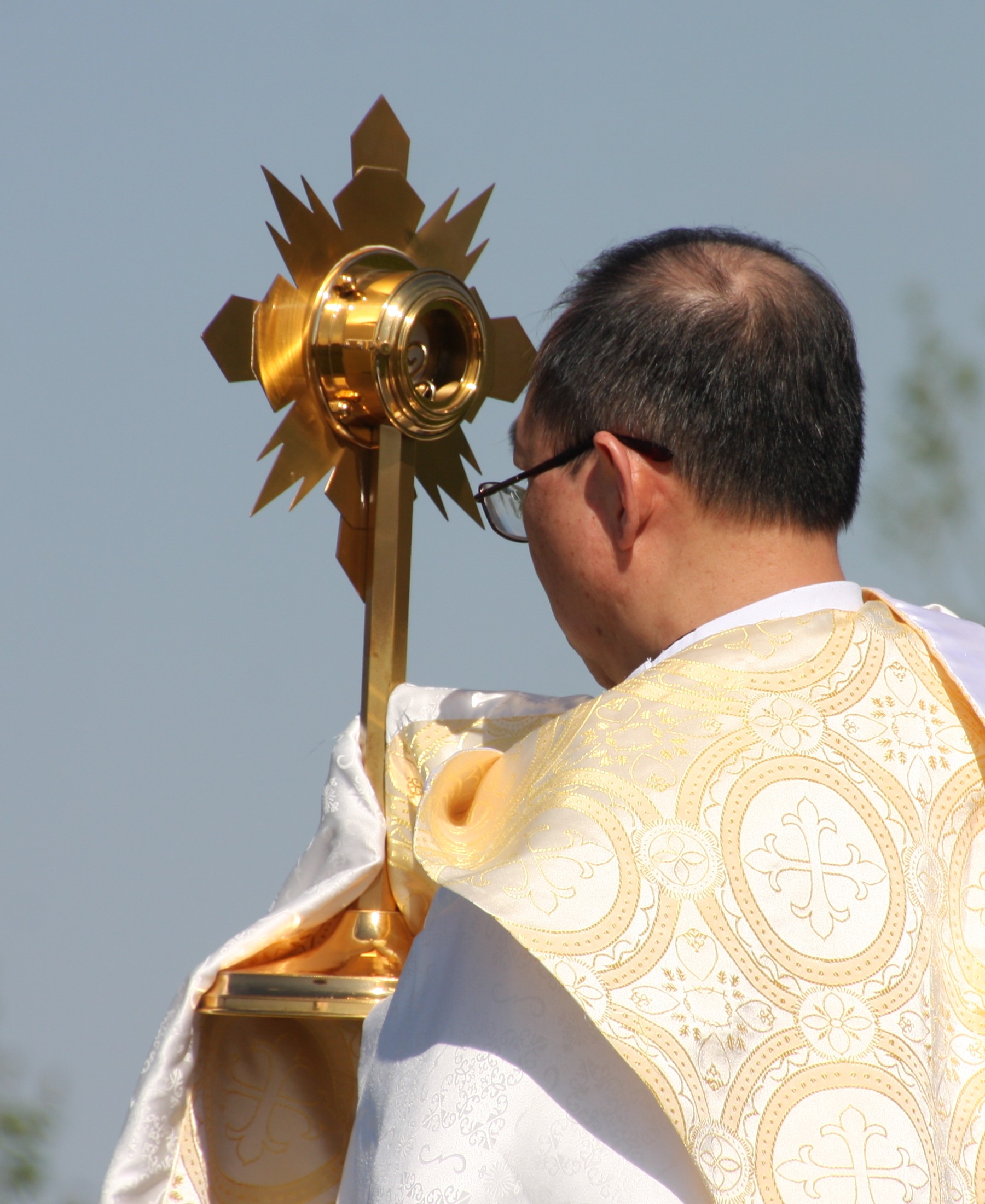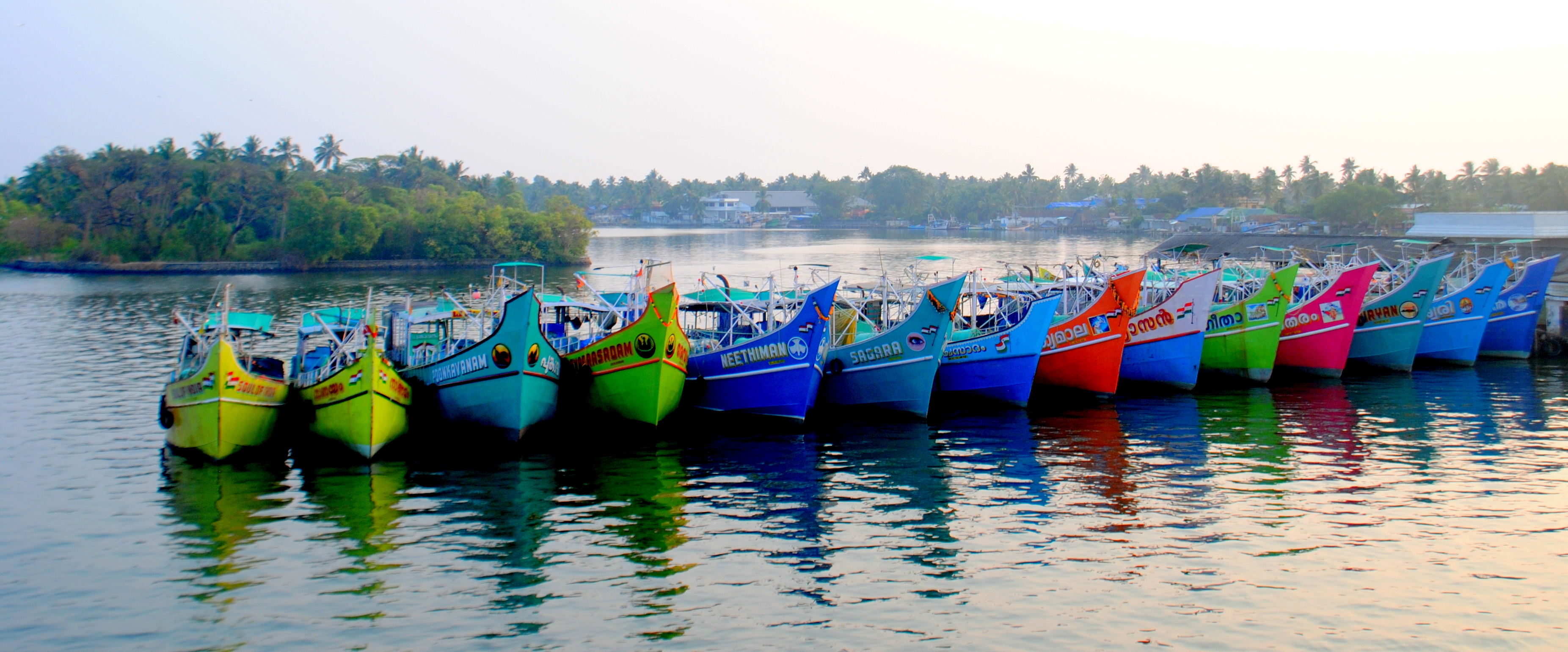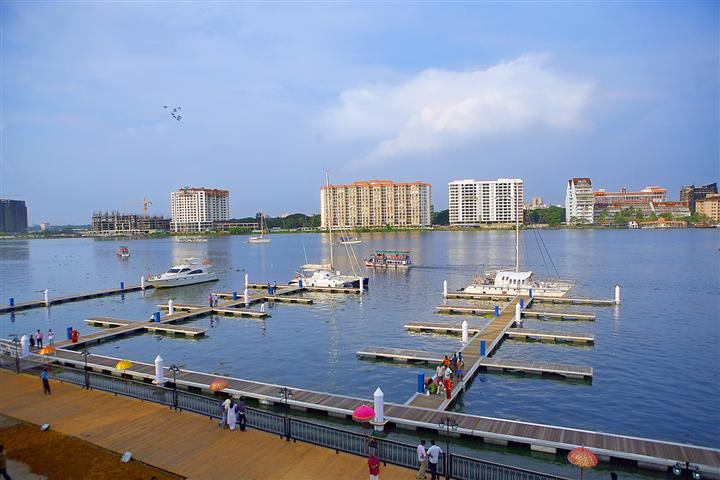|
Indo Portuguese Museum
The Indo-Portuguese Museum is a museum in Fort Kochi, Kerala, India. History The museum was established by the efforts of the late Dr. Joseph Kureethra, Bishop of Kochi, in a bid to protect and showcase the rich cultural heritage and Portuguese influence. This museum now showcases the Portuguese influences on Fort Kochi and the surrounding areas, especially, the western parts of Kochi. Features The museum has five main sections: Altar, Treasure, Procession, Civil Life and Cathedral. Among the pieces on display are a piece of the altar made in teak (16th century) from the Church of Our Lady of Hope, Vypeen; a chasuble (19th century) from Bishop's House, Fort Kochi; a processional cross, which is a combination of silver and wood (17th century) from Santa Cruz Cathedral, Fort Kochi; and an Indo-Portuguese monstrance (18–19th century) from the Church of Our Lady of Hope. Other objects on display at the Indo-Portuguese Museum are sculptures, precious metal objects and vest ... [...More Info...] [...Related Items...] OR: [Wikipedia] [Google] [Baidu] |
Fort Kochi
Fort Kochi, Fort Cochin in English, Cochim de Baixo ("Lower Kochi") in Cochin Portuguese creole, is a neighbourhood of Cochin (Kochi) city in Kerala, India. Fort Kochi takes its name from the Fort Manuel of Cochin, the first European fort on Indian soil, controlled by the Portuguese East Indies. This is part of a handful of water-bound islands and islets toward the south-west of the mainland Kochi, and collectively known as ''Old Cochin'' or ''West Cochin''. Adjacent to this is the locality of Mattancherry. In 1967, these three municipalities along with a few adjoining areas, were amalgamated to form the Kochi Municipal Corporation. Scientific theory In the BC period, the region that is today known as Kerala was covered by mangrove woods. Turf and sand banks were created with the rise in sea-level which formed the shape of the coastal area as we see it today. The name ''Cochin'' implies "co-chin", meaning "like-China". It looked like China when the Chinese came to the reg ... [...More Info...] [...Related Items...] OR: [Wikipedia] [Google] [Baidu] |
Church Of Our Lady Of Hope
Church of Our Lady of Hope ( Malayalam: പ്രത്യാശമാതാ ദേവാലയം, Cochin Portuguese Creole, Cochin Portuguese: Igreja de Nossa Senhora da Esperança ) is a Latin Church parish church, parish in the Roman Catholic Diocese of Cochin, Diocese of Cochin. It is located at Vypin, Fort Vypin in the island of Vypeen, the point where the Vembanad Lake merges with the Arabian Sea, with Fort Kochi, Fort Cochin on the other side. The church, with an area of , occupies the southern end of Vypeen Island. Ministering to Latin Catholics of Malabar, its liturgies are according to the Roman Rite of the Catholic Church. The patron of the church is Our Lady of Hope a form in which Mary, mother of Jesus, Virgin mary is venerated as the patron of Fishermen and navigators, pointing to why the emblem of church is an anchor. It happens to be one of the oldest churches in Kochi, built by the Portugal, Portuguese in 1605 A.D. It is part of Diocese of Cochin A significant ... [...More Info...] [...Related Items...] OR: [Wikipedia] [Google] [Baidu] |
History Museums In India
History (derived ) is the systematic study and the documentation of the human activity. The time period of event before the invention of writing systems is considered prehistory. "History" is an umbrella term comprising past events as well as the memory, discovery, collection, organization, presentation, and interpretation of these events. Historians seek knowledge of the past using historical sources such as written documents, oral accounts, art and material artifacts, and ecological markers. History is not complete and still has debatable mysteries. History is also an academic discipline which uses narrative to describe, examine, question, and analyze past events, and investigate their patterns of cause and effect. Historians often debate which narrative best explains an event, as well as the significance of different causes and effects. Historians also debate the nature of history as an end in itself, as well as its usefulness to give perspective on the problems of the p ... [...More Info...] [...Related Items...] OR: [Wikipedia] [Google] [Baidu] |
Museums In Kochi
A museum ( ; plural museums or, rarely, musea) is a building or institution that cares for and displays a collection of artifacts and other objects of artistic, cultural, historical, or scientific importance. Many public museums make these items available for public viewing through exhibits that may be permanent or temporary. The largest museums are located in major cities throughout the world, while thousands of local museums exist in smaller cities, towns, and rural areas. Museums have varying aims, ranging from the conservation and documentation of their collection, serving researchers and specialists, to catering to the general public. The goal of serving researchers is not only scientific, but intended to serve the general public. There are many types of museums, including art museums, natural history museums, science museums, war museums, and children's museums. According to the International Council of Museums (ICOM), there are more than 55,000 museums in 202 countries ... [...More Info...] [...Related Items...] OR: [Wikipedia] [Google] [Baidu] |
Ethnic Museums In India
An ethnic group or an ethnicity is a grouping of people who identify with each other on the basis of shared attributes that distinguish them from other groups. Those attributes can include common sets of traditions, ancestry, language, history, society, culture, nation, religion, or social treatment within their residing area. The term ethnicity is often times used interchangeably with the term nation, particularly in cases of ethnic nationalism, and is separate from the related concept of races. Ethnicity may be construed as an inherited or as a societally imposed construct. Ethnic membership tends to be defined by a shared cultural heritage, ancestry, origin myth, history, homeland, language, or dialect, symbolic systems such as religion, mythology and ritual, cuisine, dressing style, art, or physical appearance. Ethnic groups may share a narrow or broad spectrum of genetic ancestry, depending on group identification, with many groups having mixed genetic ancestry. Ethnic gr ... [...More Info...] [...Related Items...] OR: [Wikipedia] [Google] [Baidu] |
Calouste Gulbenkian Foundation
The Calouste Gulbenkian Foundation ( pt, Fundação Calouste Gulbenkian), commonly referred to simply as the Gulbenkian Foundation, is a Portuguese institution dedicated to the promotion of the arts, philanthropy, science, and education. One of the wealthiest charitable foundations in the world, the Gulbenkian Foundation was founded on 18 July 1956 according to the last will and testament of Calouste Sarkis Gulbenkian, a Portugal-based oil magnate who bequeathed his assets to the country in the form of a foundation. Gulbenkian the Armenian oil magnate had one of the largest private art collections in Europe, which is housed in the foundation's Calouste Gulbenkian Museum in Lisbon. The foundation hosts numerous institutions and initiatives including the Gulbenkian Orchestra, Gulbenkian Science Institute, Gulbenkian Prizes and the Gulbenkian Commission. Organization Located in Lisbon (civil parish of Avenidas Novas), the Foundation's premises opened in 1969 and were design ... [...More Info...] [...Related Items...] OR: [Wikipedia] [Google] [Baidu] |
Monstrance
A monstrance, also known as an ostensorium (or an ostensory), is a vessel used in Roman Catholic, Old Catholic, High Church Lutheran and Anglican churches for the display on an altar of some object of piety, such as the consecrated Eucharistic Sacramental bread, host during Eucharistic adoration or Benediction of the Blessed Sacrament. It is also used as reliquary for the public display of relics of some saints."" New Advent Catholic Encyclopedia. Retrieved on 2014-11-16. The word ''monstrance'' comes from the Latin language, Latin word ''monstrare'', while the word ''ostensorium'' came from the Latin word ''ostendere''. Both terms, meaning "to show", are used for vessels intended for the exposition of the Blessed Sacrament, but ''ostensorium'' has only this meaning. Liturgical context In the Catholic Churc ...[...More Info...] [...Related Items...] OR: [Wikipedia] [Google] [Baidu] |
Santa Cruz Basilica
The Santa Cruz Cathedral Basilica (also known as കോട്ട പള്ളി / Kotta Palli) at Fort Kochi, Kochi, is one of the nine basilicas in Kerala. Counted as one of the heritage edifices of Kerala, this church is one of the finest and most impressive churches in India and visited by tourists the whole year round. It is a place of devotion as well as a center of historic significance, endowed with architectural and artistic grandeur and colours of the gothic style. The basilica serves as the cathedral church of the Diocese of Cochin. It was built originally by the Portuguese and elevated to a cathedral by Pope Paul IV in 1558, was spared by the Dutch conquerors who destroyed many Catholic buildings. Later the British demolished the structure and commissioned a new building in 1887. Consecrated in 1905, Santa Cruz was proclaimed a basilica by Pope John Paul II in 1984. History Portuguese missionaries and Santa Cruz Church: 1505–1558 The history of Santa Cruz ... [...More Info...] [...Related Items...] OR: [Wikipedia] [Google] [Baidu] |
Chasuble
The chasuble () is the outermost liturgical vestment worn by clergy for the celebration of the Eucharist in Western-tradition Christian churches that use full vestments, primarily in Roman Catholic, Anglican, and Lutheran churches. In the Eastern Orthodox Churches and in the Eastern Catholic Churches, the equivalent vestment is the phelonion. "The vestment proper to the priest celebrant at Mass and other sacred actions directly connected with Mass is, unless otherwise indicated, the chasuble, worn over the alb and stole" (''General Instruction of the Roman Missal'', 337). Like the stole, it is normally of the liturgical colour of the Mass being celebrated. Origins The chasuble originated as a sort of conical poncho, called in Latin a paenula or casula or "little house", that was the common outer traveling garment in the late Roman Empire. It was simply a roughly oval piece of cloth, with a round hole in the middle through which to pass the head, that fell below the knees on ... [...More Info...] [...Related Items...] OR: [Wikipedia] [Google] [Baidu] |
Vypeen
Vypin (Malayalam: വൈപ്പിന്, Cochin Portuguese: Isla Santa) is one of the group of islands that form part of the city of Kochi (Cochin), in the Indian state of Kerala. Vypin forms a barrier island which lies between the Arabian Sea in the west and the Cochin backwaters formed by the various distributaries of Periyar river, in the east. The northernmost end of the island lies on the estuary of the Periyar river in Muziris (Kodungallur), and the southernmost end in the mouth of the Cochin Backwaters in Kalamukku near Fort Vypin. The island is about long and is connected to mainland Kochi by a series of bridges known as the Goshree bridges, which start at Kalamukku in Vypin, touch other two islands and then finish at Marine Drive covering a total distance of around . Vypin is 58th most densely populated islands in the world. Njarakkal is one of the most densely populated locations within Vypin. Development At far the northern tip of Vypin, is home to the Mun ... [...More Info...] [...Related Items...] OR: [Wikipedia] [Google] [Baidu] |
Teak
Teak (''Tectona grandis'') is a tropical hardwood tree species in the family Lamiaceae. It is a large, deciduous tree that occurs in mixed hardwood forests. ''Tectona grandis'' has small, fragrant white flowers arranged in dense clusters (panicles) at the end of the branches. These flowers contain both types of reproductive organs ( perfect flowers). The large, papery leaves of teak trees are often hairy on the lower surface. Teak wood has a leather-like smell when it is freshly milled and is particularly valued for its durability and water resistance. The wood is used for boat building, exterior construction, veneer, furniture, carving, turnings, and other small wood projects. ''Tectona grandis'' is native to south and southeast Asia, mainly Bangladesh, India, Indonesia, Malaysia, Myanmar, Thailand and Sri Lanka, but is naturalised and cultivated in many countries in Africa and the Caribbean. Myanmar's teak forests account for nearly half of the world's naturally occurring teak. ... [...More Info...] [...Related Items...] OR: [Wikipedia] [Google] [Baidu] |
Ernakulam
Ernakulam () is the Central Business District of the city of Kochi in Kerala, India and has lent its name to the Ernakulam district. Many major establishments, including the Kerala High Court, the office of the Kochi Municipal Corporation and the Cochin Shipyard are situated here. History Classical history The region can claim to have played a significant part in fostering the trade relations between Kerala and the outside world in the ancient and medieval period. The early political history of Ernakulam is interlinked with that of the Chera Dynasty of the Sangam age, who ruled over vast portions of Kerala and Tamil Nadu. After the Cheras, the place was later ruled by the Kingdom of Cochin (Perumpadapu Swaroopam). Princely State of Cochin Although under British suzerainty (specifically the East India Company) since the Anglo-Dutch Treaty of 1814, Rama Varma XII of the Kingdom of Cochin moved his capital from Mattancherry to Tripunithura in about 1840. Fort Cochin Munic ... [...More Info...] [...Related Items...] OR: [Wikipedia] [Google] [Baidu] |

.jpg)





